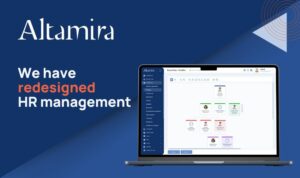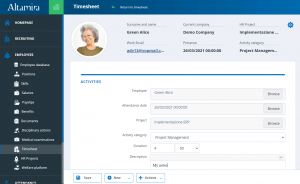Would you hire a candidate without ever having interviewed them?
Most likely, the answer is no.
The hiring interview is still an essential step in the recruitment process for all companies, even nowadays, when many other steps—such as the initial screening—are often carried out with the help of technology.
Moreover, it is a crucial moment for acquiring more information and getting an impression about the candidate that would otherwise be impossible to obtain.
However, there is another type of interview which, although used by significantly fewer companies, is just as useful: the exit interview.
What an exit interview is and why it is so important
An exit interview is an interview with an employee conducted just before they leave the company.
In some companies, this is replaced by an exit survey—typically in the form of multiple-choice questions—designed to gauge the employee’s degree of satisfaction with the company and the reasons that prompted them to leave.
To understand how important such an interview is, let’s think about what happens in another business context.
When a B2B company loses a client, it puts great effort into understanding the reasons why. In this way, they can identify the problem (whether it was an issue with the marketing division, the customer support or the after-sales department, whether it was due to the appearance of a new competitor, etc.) and immediately proceed to address it, thus safeguarding their business.
It’s just as important to understand the reasons why an employee is saying goodbye. Sometimes, the reasons behind this choice are personal ones that have little to do with the company. Other times, this is an almost inevitable step due to the dynamic nature of the modern labor market. On other occasions, however, the employee’s decision to leave is the result of an internal deficiency in the company—one which, if ignored, could do further harm to the company’s business.
Thanks to exit interviews, many companies have been able to uncover problems such as:
- misconduct by managers that undermines the cohesiveness of their team;
- mistakes in the recruitment process, particularly in the drafting of job descriptions;
- deficiencies in the onboarding process;
- an absence of internal career paths;
- the inadequacy of the tools provided for a specific role;
- the non-competitiveness of the wages;
- gaps in training for some positions.
All these are problems which, if left unresolved, would continue to undermine staff engagement and staff retention.
The exit interview: 6 mistakes to avoid
To sum up, it’s always a good idea to conduct an exit interview.
However, since it involves an employee who is probably unhappy with the company, it is a rather delicate matter.
Thus, one should take care to avoid committing one or more of the following errors:
- Taking the exit interview as an isolated activity. The exit interview is not an isolated step, but an integral part of various business processes and strategies. On the one hand, this is a component of the employer branding strategy, through which a company transforms its current and former employees into brand ambassadors. On the other hand, it is a fundamental step in the offboarding procedure for employees. Thus, beside all the red tape and handing over their tasks to colleagues, you should always plan at least one conversation with the employee during one of their last days at work.
- Asking the managers to do the exit interviews. Except in very rare cases, it’s always better to let an HR professional conduct an exit interview. This is not only because they possess the right skills to make the conversation proceed most fruitfully, but also because one of the causes of the employee resigning might be the behavior of the manager who is their direct superior.
- Using the wrong tone during the interview. The meeting should be set up more like a pleasant chat that a formal interview. It should be relaxed, positive and forward-looking. Remember to show curiosity and interest in their next job, and ask if they have any questions or need assistance with the offboarding procedures. You should first do these steps before you start investigating the causes of their departure.
A too-direct approach runs the risk of causing reactions at both ends of the spectrum, all of which are problematic. The employee might choose a diplomatic approach, concealing or minimizing the problems they encountered, or, conversely, they might take the opportunity to vent some steam, overly magnifying the negative episodes they experienced during their time with the company. - Failing to expect the worst. Since you’re going to talk to someone who has chosen to leave your company, you must be prepared to hear some criticism, which could be uncompromising and even concern you personally. Nonetheless, your reaction must be fully professional.
- Failing to take the feedback seriously. It’s not enough to listen to what they have to say: it is also necessary to build on this feedback for the good of the company. Start by making a note of it for future reference, perhaps in your HRM system. Then, do an investigation into the problems reported and work to solve them, involving everyone responsible.
- Failing to size up your competition. The exit interview is an excellent opportunity to gather information on your competition. If the employee isn’t reluctant to answer your questions, try to understand what position, salary and benefits they were offered, and whether your company is competitive in these regards.
What to do when the exit interview is a flop
Sometimes, the employee may not be willing to do an exit interview. Other times, it might prove impossible to get them to open up, despite all your efforts. In this case, it may be a good idea to try to reconstruct the reasons for their departure by relying on the reporting functions of your HR platform (for companies that use one), as well as the testimonies of their colleagues.
The reports on their absences, their evaluations and self-assessments, the frequency of their attendance for training courses, etc., combined with talking to their colleagues and the manager who was their direct superior, can give you a realistic view of the situation.
Copyright: ©artflare/Fotolia




























































































